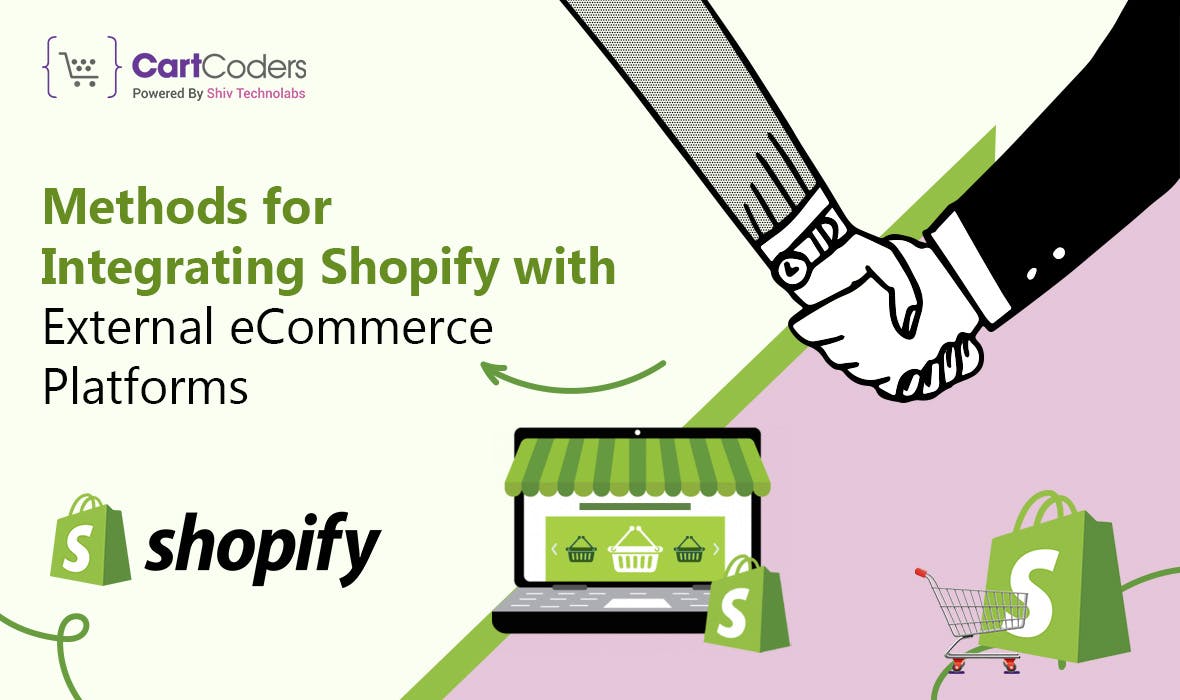Shopify is a leading eCommerce platform due to its extensive library of pre-configured features and apps that simplify setting up a unique online store that can scale with your company. Shopify is an e-commerce platform that gives store owners a broad range of options for customizing the software to their own requirements.
One of the most telling signs of Shopify's extensive success is that the company announced in its most recent quarterly results that it had surpassed one million merchants worldwide. Around 175 nations use Shopify, although the United States, the United Kingdom, Brazil, and Canada are the most popular.
eCommerce requires seamless platform connectivity to simplify client shopping and company operations. The central e-commerce platform Shopify gives businesses several features.
Businesses typically need unique functions that third-party integrations may provide. This tutorial covers Shopify third-party API integration solutions, including advantages, processes, problems, and best practices.
SaaS App integration possibilities with Shopify

Over 165,000 online stores utilize Shopify, giving you access to a potential customer base. Thanks to the incorporation, customers' shopping information (along with the option to add, delete, update, and edit it) will be viewable and usable.
If a SaaS company can integrate with Shopify's eCommerce platform, it may increase its system's functionality and attract a more extensive customer base. This is useful for SaaS businesses since it allows them to expand their operations and improve their present offerings.
What to Gain from Shopify's Third-Party Integrations?
Shopify firms strive to increase customer service and operational efficiency in the competitive e-commerce market. Shopify's third-party API integration services link their platforms to additional apps, services, and data sources.
Capability Enhancement: Adding apps to your Shopify shop is a terrific way to expand its capabilities beyond what the platform itself offers. This might be anything from innovative data analysis to flexible packaging options.
Customization: Companies may tailor their e-commerce strategies using specialized software to achieve their unique objectives.
Improved Customer Interactions: Customized recommendations, faster checkouts, and more straightforward payment options are just a few ways an integration might enhance the customer experience.
Automation and Efficiency: Integrations allow employees to devote more time to critical initiatives by simplifying and automating routine tasks such as inventory management, order fulfillment, and customer interactions.
Scalability: The vitality of the e-commerce ecosystem is dependent on the adaptability of third-party connections.
Methods for Integrating Shopify with External eCommerce Platforms

Developing a Shopify third-party API integration store requires a deliberate strategy.
Determine Integration Requirements
The first step is to analyze to determine which functions and characteristics should be combined. Such services include CRM, inventory management, marketing automation, shipping, and payment gateways.
Pick an Outside Integration Firm
Assessing Suppliers Evaluate each vendor based on how effectively they integrate with Shopify and how well they serve their clients. Suppose you want your Shopify store to work flawlessly with an external service. In that case, you must ensure the APIs (Application Programming Interfaces) provided by the provider you pick are adequately documented.
Design a plan for implementing the integration
Establish how information will go between Shopify's third-party API integration provider. Product, order, customer, and inventory information may be found here. Customer Satisfaction Consider how changes to your website's backend and front end will influence your users.
Development and Testing
Create the necessary code to link Shopify with the third-party app. If you want seamless data flow, ensure all API endpoints are correctly connected. Create a test environment that mirrors the production server so that integration can be tested without affecting the live site. Verify data consistency, error reporting, and use case compatibility.
Protecting Individual Data
Keep sensitive information secure throughout the implementation process using encrypted communication channels like HTTPS. You should ensure that the integration complies with all data protection laws and rules, including the General Data Protection Regulation (GDPR), the California Consumer Privacy Act (CCPA), and other relevant industry standards.
Deployment
The integration should be released to a staging or development environment to discover potential issues first. Use tracking tools to monitor the integration's progress and detect problems as soon as they arise.
User Training and Upkeep
Create training materials or documentation to ensure users understand how to maximize the unified features. If you have any questions or issues concerning the third-party integration, please make it possible for customers to contact customer service.
Conclusion
Shopify's third-party API integration customizes online operations, improves customer experiences, and streamlines Shopify development processes. A systematic approach, careful integration partner selection, and best practices may enhance Shopify store potential. Notwithstanding issues, smooth interfaces improve productivity, customer satisfaction, and e-commerce firm performance.